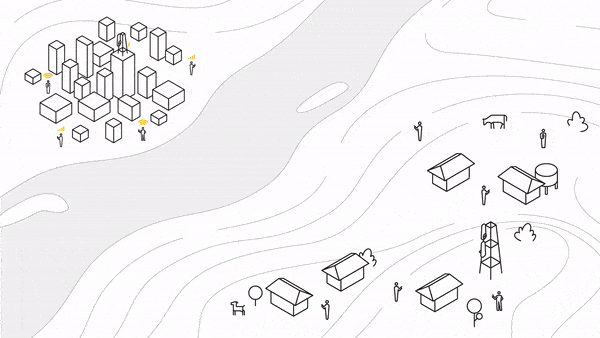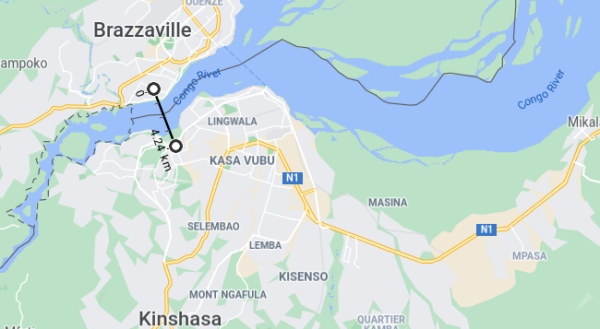The real advantage of broadband via laser links
It’s not the speed, or the reliability. It’s the people.
“What if sacrificing a small amount of signal reliability actually led to millions more people around the world having access to faster, cheaper internet?"

This and similar ideas are what led Google’s sister company called X Research to develop Project Taara, a way to provide very fast internet connectivity to remote and underserved areas with laser-like beams of light. Such beams do not work with the same performance in every weather condition, but are the only viable solution in many places.
One proof of this is what Taara recently announced: “beaming almost 700TB of data in 20 days across the Congo River”, between the two cities of Brazzaville in the Republic of the Congo and Kinshasa in the Democratic Republic of Congo:

This is relevant because, even if Brazzaville and Kinshasa are less than 5 kilometers apart, it is not possible to lay fiber cables between them. Due to the speed and depth of the Congo River, “cables have to travel more than 400km to loop around it”.
As expected, that link was not 100% available. According to Project Taara, however, it can still “play a key role in bringing faster, more affordable connectivity” to the 17 million people living in the two cities.
The main quality of Project Taara
High speed broadband to millions of people with just a few laser beams is cool. Doing it by spending (relatively speaking, of course) as little as Taara requires is even cooler. But that is not the thing I like most in that project.
The thing I like the most in Taara is that it can be considered (stay with me for a moment, here) a bottom-up, highly participative project. Yes, I do know that almost none of those 17 million people actually woke up and say “I REALLY need to surf the net at 20 Gigabit per second, let’s build an optical link all together folks!”
And yes, I am aware that Project Taara may be described as just one more way for american multinationals to make loads of money by impose and indirectly control, costly infrastructures on less developed countries, to re-colonize them.
Still, Project Taara is really “bottom-up and participatory”… if you compare it with stuff like Starlink, that hides everybody’s night sky without asking permission.
Who writes this, why, and how to help
I am Marco Fioretti, tech writer and aspiring polymath doing human-digital research and popularization.
I do it because YOUR civil rights and the quality of YOUR life depend every year more on how software is used AROUND you.
To this end, I have already shared more than a million words on this blog, without any paywall or user tracking, and am sharing the next million through a newsletter, also without any paywall.
The more direct support I get, the more I can continue to inform for free parents, teachers, decision makers, and everybody else who should know more stuff like this. You can support me with paid subscriptions to my newsletter, donations via PayPal (mfioretti@nexaima.net) or LiberaPay, or in any of the other ways listed here.THANKS for your support!